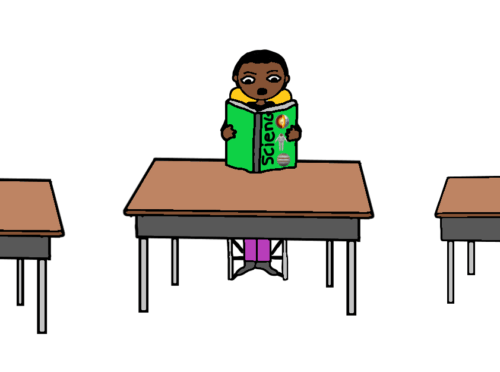Nonfiction or informational books do not tell a story. Instead, they give information that is arranged quite differently.
If you wonder when your kid will read expository text or nonfiction books—it is for the rest of their academic life! Your child’s textbooks are all informational books.
Besides textbooks, what other materials do children read to gain academic information? They read other nonfiction books, newspaper articles, magazines, and perhaps articles over the internet, right? Information in these is presented using the expository text structure.
Remember, children learn how to read in younger classes. From fourth standard onwards, they must read to learn. The vocabulary in textbooks and informational texts is complex, higher-level vocabulary, and the content is rich in concepts. Suddenly, there is a jump in what they are expected to do. Studies have shown that children who learn expository text features and structure do better in academics because they know how to identify the essential information like the main idea and supporting details.
I bet that bit about ‘do better in academics’ got your attention. Good! Because it is not enough to have expectations. We must provide children with the tools needed to meet them. Let’s look at the expository text features first and then at the types of expository text structures. Later, we’ll discuss what you can do for kids in younger primary and older primary classes.
What are text features?
Text features are components or parts of the text. They are related to the subject matter and provide details about the content. These include the table of contents, headings, bold words, sidebars, pictures and captions, maps, charts and graphs, labeled diagrams, index, and glossary.
We know these, don’t we? But we just don’t make the connection that our kids will learn better if they know that these features are used for a reason.
Do you remember your teachers calling out, “Open your book to chapter 3. We’ll see what happened in …?” How did you find chapter 3? Some kids looked at the person sitting next to them; some kids went page to page looking for chapter 3, but the kid who knew to use the table of contents was there before anyone else.
Say the lesson is about landforms. What does the textbook show? It shows pictures! They can be photographs of real deserts, mountains, or a drawing. The student looks at the pictures and instantly understands what they look like and the stark differences between these two landforms. Many illustrations come with labels that point out the essential details relevant to the topic. If there were no pictures, the text would be filled with words to give the same information.
Charts and graphs help us understand the relationships among two elements. An example is the pie chart that shows how much water there is on earth. If you tell a young child that 70% of the earth is covered by water, how will they understand how much is 70%? Show them the pie chart, where 70% of the circle is colored blue, and it clicks, “Oh, so much of the earth is blue! That’s what they mean when they say 70% of the earth is covered by water!”
Do you see how a reader who knows the purpose of a text feature uses it to understand the content?
Text features serve many purposes. Some of these are used to explain words and vocabulary use. Others help the reader locate main ideas. Some text features give additional details about the text, and still others present the same information in a different format.
What are the other text features?
| Text feature | Purpose |
| Title | It tells the reader what the text is about |
| Table of contents | Gives the titles of the sections and chapters, and their location in the book |
| Headings | They tell the topics within the text |
| Subheadings | These pinpoint the topic within a larger topic |
| Preface | It’s the introduction to the book |
| Sidebars | These contain additional information on the main topic usually presented in a box on the side or bottom of the page |
| Photographs | They show what something in the topic looks like |
| Cutaways and cross-sections | These are pictures showing the insides of something like an illustration of the heart’s chambers or cross-section of the stem. |
| Diagrams | They are simplified illustrations or drawings of an object from the text. The main parts are usually labeled. |
| Charts and graphs | They show information related to other information |
| Maps | They show the geographical, political, or historical details of the topic |
| Index | It gives the alphabetical list of important details and where they are located |
| Glossary | Definitions of vocabulary words |
Some children will get these incidentally, that is, on their own, through practice. But not all children know that these features are present to guide them in their reading. Therefore, they don’t use the text features on their own. If we want our children to be purposeful in their reading, we must teach them what these text features stand for.





